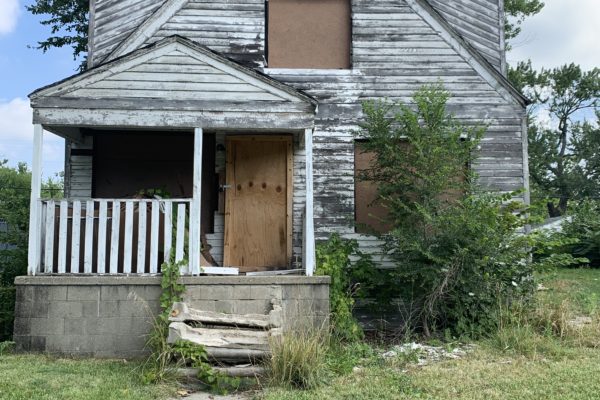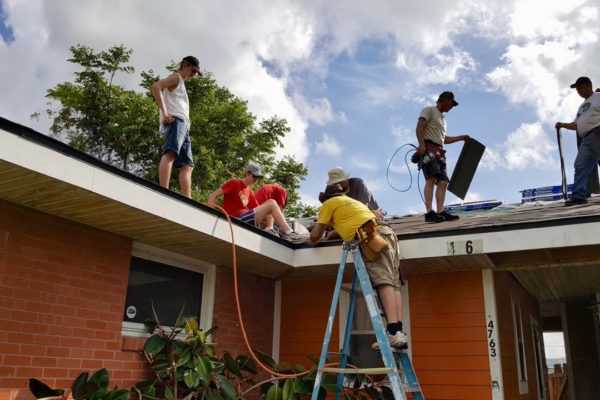Over the next 12 months we’ll be taking a deeper look at the past decade since Katrina on the Gulf Coast and into the future with a regular blog series, K+10.
“So, is everyone back yet?” This is an inevitable question when discussing New Orleans post-Katrina, and the short answer is no, after almost a decade there are about 100,000 residents who have not yet come back. But many are still working on it.
In most neighborhoods there are far fewer reminders of Katrina than there were years ago, with tremendous progress made rebuilding. Many parts of the city are world-class, including the renovated Mercedes-Benz Superdome, Morial Convention Center, brand-new University Medical Center and redeveloping theatre district, not to mention the National WWII Museum. A brand new airport terminal is also on the way.
New Orleans East and the Lower Ninth Ward remain a different, but also improving, story, with large sections still visibly in the process of recovery. In these parts of town, one can feel both the unmistakably vibrant energy of New Orleans as well as the mostly-invisible absence of those not yet back.
Though often difficult to see from the outside, that absence is still felt by the community and the families themselves. The passage of time has not dulled their passion to return, and finding resources for restoration is the name of the game.
Lower Ninth Ward Rising
M.A. Sheehan and her coworker, Julia McMahon, are surrounded by mountains of paper. As the late-afternoon sun filters through the windows of the Lower 9th Ward Homeownership Association office at the Trinity Lutheran Church facility, Sheehan and McMahon are actively working to assist hundreds of homeowners who are still trying to return home to the neighborhood.
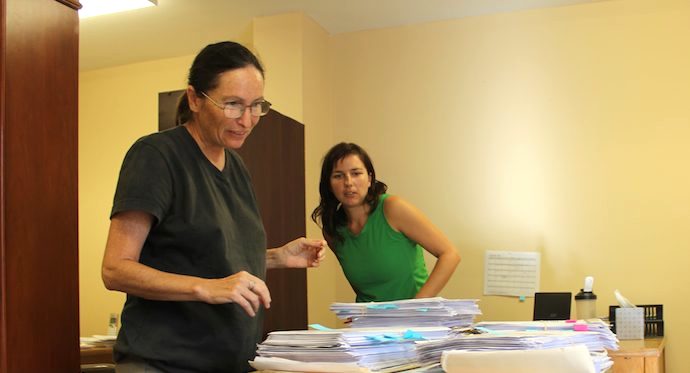
“There’s no question people are still coming back,” says Sheehan. “So many people still want to come home. And we’re at the moment where all of the pieces are falling into place.”
She is referring to the latest improvements in the Road Home program, put in place after the storm to help displaced homeowners return home. This is especially helpful for the Lower Ninth Ward, where less than 30% of the pre-storm population has returned thus far.
What makes the Lower Nine different than the rest of the city? There are many factors both formerly and currently at play; M.A. outlines the key points in this piece from the Lower 9 Homeownership Association:
Preconditions
In 2005, the Lower Ninth Ward had one of the the highest homeownership rates in all of Orleans Parish. According to the The Data Center, 59% were homeowners, and 55.6% of homes had no mortgage. 72.6% of households received employment income. 35.8% received Social Security. Only 8.3% received public assistance. However, average household income in the Lower Nine was only $37,894 (in 2012 dollars), and it fell to $33,557 from 2008-2012. In contrast, the overall average for Orleans Parish is nearly double that, at $60,280.
These low wages, combined with city-planning decisions from decades earlier, resulted in home values well below other areas of town. This would have great effect on the initial implementation of the Road Home Program post-Katrina, which will be discussed further on.
Ironically, the Lower Nine was and continues to be one of the highest-elevated neighborhoods in the entire area, with much of its land above sea level and outside the official flood plain. Many homeowners did not own flood insurance, as it was not required or even recommended for their homes.
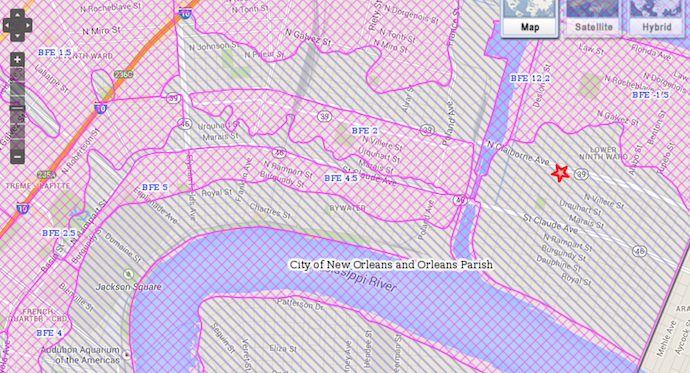
The Extended Storm
When Katrina hit, the man-made Mississippi River Gulf Outlet funneled the storm surge energy of the hurricane from the open ocean all the way to the flood walls lining the Industrial Canal, leading to the failure of a long section protecting the Lower Ninth Ward. Like a tsunami, the resulting release of water rapidly flooded the Lower Nine to an unprecedented level, over 20 feet in some areas.
While fantastic numbers of volunteers were able to immediately help accessible areas along the Gulf Coast like Gulfport and Biloxi, Miss., the Lower Nine sat underwater for several months, re-flooded by Hurricane Rita before finally being pumped dry. Bridges into the neighborhood were barricaded, and it was one of the last to have gas, electricity, and fresh water utilities resume service.
Without the required utilities, FEMA trailers were delayed, pushing back timeframes for residents to return.
Unlike most areas of New Orleans, where structures survived and could be gradually restored, it was all or nothing for a large portion of the Lower Nine. Due to the catastrophic nature of the flooding in the neighborhood, over half of the houses were completely destroyed, thus requiring a completely new home from the ground up.
Assistance Setbacks
Road Home’s original formula provided assistance to homeowners at the level of whichever was lower: the cost to rebuild, or the pre-storm market value of the home. In areas with high pre-storm property values, the cost to rebuild was the lower number, and funds were often sufficient to make restoration possible.
However, the average cost to rebuild in the Lower Nine, often nearing $200,000, according to Sheehan, was far greater than property values. The average initial payments from Road Home often came in at less than half that, often only $50,000 or $60,000 – the pre-storm home values.
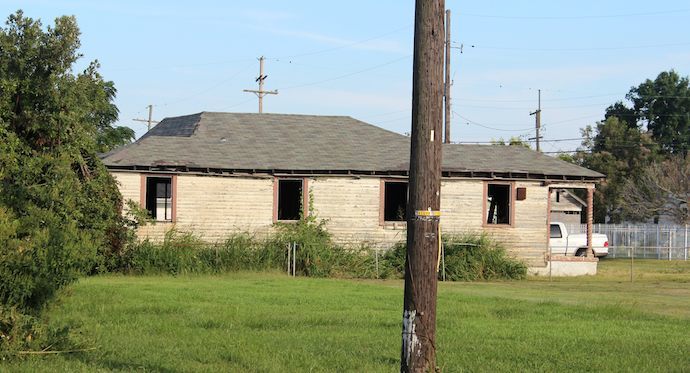
Insufficient financial resources meant waiting.
For the displaced homeowners, living expenses began taking their toll. Funds on hand often had to be tapped into for necessities. Many of those lucky enough to have a house left standing faced repeated setbacks from contractor fraud, and theft.
Over time, improvements to Road Home worked to close the initial gap caused by the original cost formulas. In the meantime, however, temporary living expenses and periods without work (jobs were flooded, too) made the gap difficult to close.
Across Town, Similar Experiences
While the Lower Ninth Ward is the most visible example, similar conditions continue to play out in a dispersed fashion across the New Orleans Metro area.
“Henry,” whose name has been changed for privacy, is a retired roofer who is currently restoring his home near Mid-City with the help of Camp Restore volunteers. Standing on his front porch, he points to the deteriorating shotgun house next door.
“Without y’all, the city would look like that house.”
Memories of the storm remain just below the surface, even in 2014, and Henry begins to share about a very different view from that same porch in 2005.
As the water came up, an older neighbor from across the street tried to make his way in a boat to a school two blocks away, for refuge. After getting to the corner a block away, the boat overturned and the man drowned.
Henry and his wife eventually managed to make it to an overpass near Airline Ave., staying there above the water for three days until they were rescued and taken to the airport. At this point Henry developed a nosebleed and discovered his blood sugar, without medication, had risen to over 600.
A short time later he found himself in the ICU in San Antonio, Tex. After recovering, he spent three months trying to find his 17-year-old son, searching all the websites for persons missing due to the storm. Finally, a neighbor ran into his son back in the neighborhood in New Orleans.
Since then, Henry and his wife have been staying at her mother’s in New Orleans, where eight family members lived in two formaldehyde-filled FEMA trailers until they were able to restore that home. He’s also had to undergo significant surgery for an abdominal and leg infection in recent years. He lifts his shirt to show the freshly healed incisions.
After receiving heavy damage from squatters and incurring fines for disrepair, Henry’s home is finally nearing completion with the help of Camp Restore volunteers.
Such a circuitous route to recovery is quite common among the families still in the process of returning home. It stands to reason that those with the most obstacles in their path would also be among the last to reach the finish line.
Bridging the Gap
Sheehan and McMahon are now working with Road Home to help homeowners access additional funds that have become available to complement loans for rebuilding. Thus far, they are actively working with over 200 Lower Nine homeowners and are reaching out to a total of 700 or so who aren’t back yet but have indicated they intend to return.
“It’s a work in progress, and they’re trying to make the program more responsive to the needs of the people,” says Sheehan. “We’ve made a ton of progress.”
You Can Help
We are accepting donations for “Materials Assistance,” 100 percent of which are dedicated toward assisting homeowners in their purchasing of the materials necessary for rebuilding. Since 2012, over 55 restoration projects have been completed by Camp Restore volunteers across the city.
You may also donate directly to the Lower 9th Ward Homeownership Association.
If you want to personally take part in making a difference, get some friends together, plan your trip and come volunteer with us!
In addition to the home-rebuilding projects we manage, many of our volunteers are also working with our fellow New Orleans nonprofits doing similar work, including St. Bernard Project, Habitat for Humanity, Rebuilding Together New Orleans, LowerNine.org and Youth Rebuilding New Orleans.
We hope to serve with you soon and make more homecomings reality!
